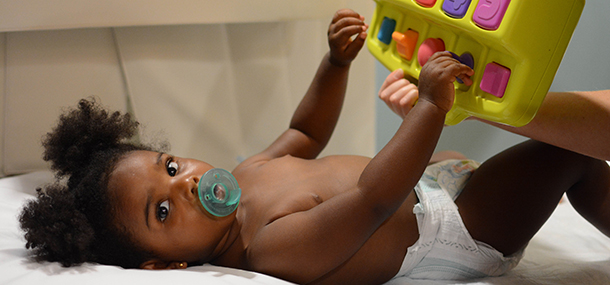
As adults we understand that some discomfort is a part of life, but as parents we want to protect our children from things that might be stressful or painful. One of the more challenging procedures in our Radiology Department is an x-ray VCUG or a nuclear cystogram. These procedures require a urinary catheter be placed into your child’s bladder in order to get the necessary imaging. Having a urinary catheter can be an invasive procedure that is stressful for patients of all ages as well as parents. One of the most common questions that parents ask is, “Why can’t my child be sedated for this procedure?”
The main reason we do not sedate patients for a VCUG or nuclear cystogram is that any sedation, even “light sedation,” is associated with potential risks. The greatest risk with sedation medicine is that your child’s breathing can slow down, even to the point of stopping. In this situation, the medical staff would help your child breath until he or she wakes up enough to breathe on their own again.
Some children react in the opposite way to sedation. Instead of easily becoming sleepy or calm, they begin to thrash, kick and cry. Additionally, when a child receives sedation it can sometimes interfere with the function of the bladder, and that can lessen the accuracy of the imaging and results.
Every child responds differently to sedation and it is our goal in the Radiology Department to accomplish the necessary imaging in the safest way possible. That is why we use a collaborative approach to support you and your child during challenging but important procedures, like a VCUG or nuclear cystogram. Even though we do not routinely use sedation, we understand that having a catheter placed into the bladder can be uncomfortable and scary for both you and your child. That is why we spend so much time making sure we are addressing the individual needs of your child during this procedure. Our staff is experienced in working with pediatric patients and will use this expertise to make appropriate changes depending on your child’s reactions or needs. The technologists who place the urinary catheters are specifically trained in placing catheters in children of all ages and a small-sized catheter is always used. This testing requires the most private parts of children’s bodies to be uncovered, so special attention is given to restoring privacy and keeping patients covered during the exam.
Child Life Specialists are available at the Main Campus and Liberty Campus to help prepare and support you and your child for the VCUG or nuclear cystogram. Knowing what to expect helps everyone feel less anxious. Coping techniques like deep breathing are used to relax body muscles and decrease the discomfort of the procedure. Toys, iPads, music and comfort items are also used throughout the procedure to help your child positively cope. Finally, we know that you are the best person to help support your child. Because of this, we encourage you to be next to your child, actively helping and comforting your child throughout the procedure.
Using all these collaborative resources, our Radiology Department will help you and your child through these challenging but important procedures.
Story contributed by Dr. Steven Kraus and edited by Catherine Leopard (Child Life Specialist).